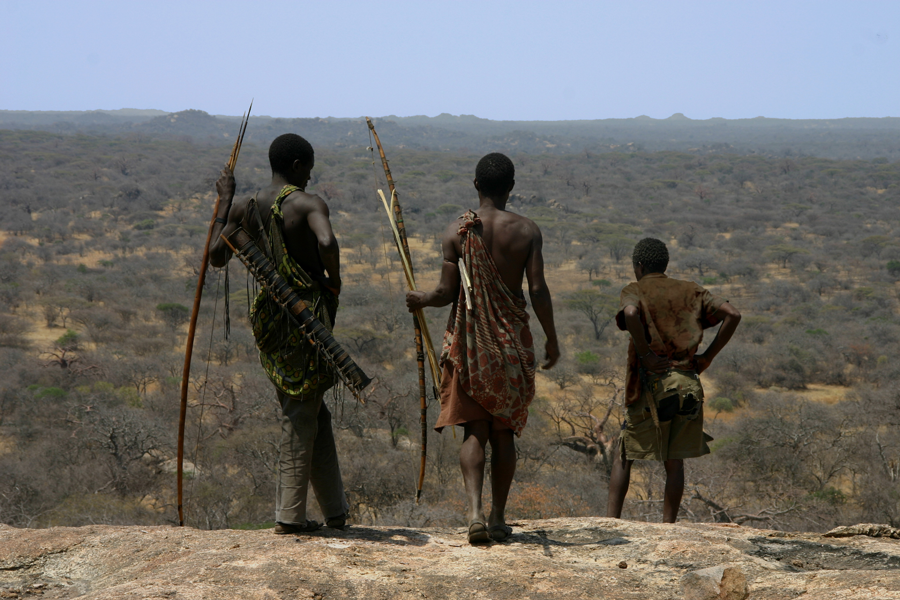Hadza Hunter-Gatherer Research

Foraging, food sharing, and diet are core themes of my research. These are ideal areas to study human adaptation, and the roles that differences in culture, technology, habitats, and social organization play in decision making, physical activity, physiology, and health. My work explores this area, using data I've collected in research with the Hadza community since 2004. Here are some examples of my work.
Ngogo Chimpanzee Demography and Life History

Since 2016, I have been carrying out research with the Ngogo Chimpanzee Project, helping study the demography and reproductive biology of this large community of wild chimpanzees living in Kibale National Park, Uganda (Wood et al. 2017). What does it mean to be human? Important question. Whatever the answer, we should look to other primates to help find out. Especially, apes. If you haven't watched Chimp Empire, do yourself a favor and watch this beautiful series documenting the Ngogo chimps. Examining our inner ape means pondering our shared historical connection to all living animals. Apes and humans often share (or compete over) the same forests, and apes sadly lose out owing to our species' propensity to log forests, spread disease, and hunt. As apes have been forced to retreat and adapt to us, we can hope that our species will be inspired to also adapt to them. To accommodate them and give them space. Two field sites of long-term chimpanzee research are found in Kibale National Park, Uganda, namely, the Kibale Kanyawara Chimpanzee Project and the Ngogo Chimpanzee Project. Donations to either of these projects will both support really important science and ape conservation.
What is Human Behavioral Ecology?

Human behavioral ecologists create decision-making models to explain why people behave the way they do. Similar to economists, practitioners often assume that there's a fundamental need being satisfied or benefit being sought through a decision to act in one way instead of another. But what are those underlying goals, or utilities which humans seek? While traditional economists don't make strong assumptions here, behavioral ecologists employ a strong prior assumption that our actions are shaped by natural and sexual selection. This means we are programmed, either consciously or subconsciously, to prioritize our own survival and reproduction, and that of our close kin (referred to as inclusive fitness). From this meta-algorithm, we presume, more specific behavioral strategies emerge, tuned to local circumstances. Much of the work that goes on in our field is descriptive, attempting to characterize the challenges and opportunities posed by particular ecosystems and cultural contexts, while also quantifying behaviors in a statistically reliable manner.
HBE theory is used to make predictions about behavior that can be tested with a variety of data sources, including interviews, observations, experiments, historical records, and archaeological datasets. Classic problems and themes addressed by human behavioral ecologists include food acquisition and food sharing (subsistence), mating, family formation and kin investment, cooperation, space use, technological change, and diverse forms of social competition.
Human behavioral ecology provides an important perspective within a larger set of evolutionary and ecological approaches to human behavior. Two closely related fields in evolutionary anthropology are cultural evolutionary theory and evolutionary psychology. These often align with, or provide alternative viewpoints to, human behavioral ecology. All these approaches prioritize standard scientific methods, such as specifying clear hypotheses and predictions, being transparent about data collection and analysis techniques, and favoring quantifiable and replicable measurements.

